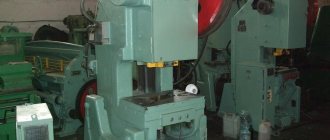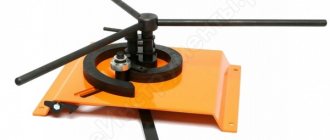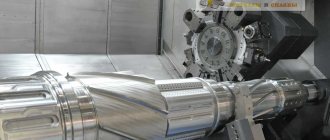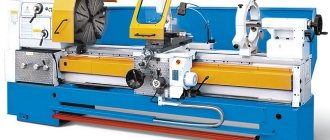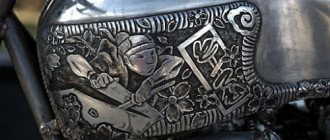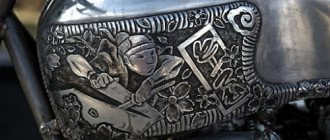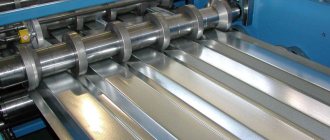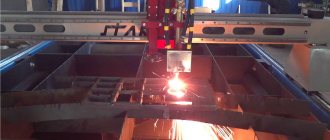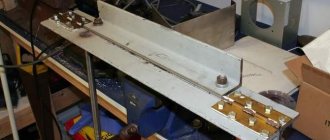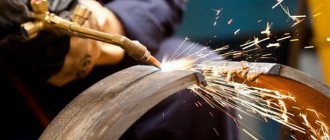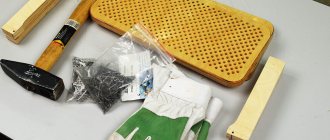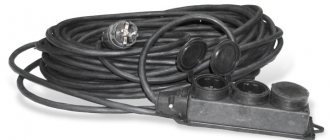It is possible to achieve ideal beam geometry only if you use high-quality woodworking equipment. In this short note, we will talk about machines for the production of corrugated timber, including cup cutters and cutters, thanks to which the assembly of a house from finished material can be simple and technologically advanced.
What equipment is needed for production
To manufacture such products you need the following equipment:
- Disc sawmill.
- Profile beam cutting machine.
- Four-sided milling machine.
- A machine for cutting cups in timber or manual cup cutters.
To produce this profiled lumber, you first need a sawmill. Here a four-sided beam will be cut from solid wood. Already from this blank a mold with a groove and a tenon is made on a four-sided machine. And, of course, a cup cutter, which will be used to cut out connecting parts at the last stage of manufacturing.
If the company produces not only profiled timber with natural moisture, but also dried timber, then special drying chambers will also be needed. And production will take place on the same machines as for material with natural moisture. Simply, before profiling, the workpieces will undergo chamber drying. And we have already talked more than once about the advantages of building from dried profiled timber.
Today, equipment for the production of such material is constantly being modernized. And machines are becoming increasingly popular - universal ones, which perform most of the work on the manufacture of such goods and make it possible, by purchasing just one equipment, to perform all the work from wood processing, splitting and milling at the same time.
What does the production process include?
First, let's look at what operations the production of profiled timber includes:
| Procurement of material | Everything here is extremely simple - for work you need wood, which is harvested by specialized forestry enterprises. The best types of wood for timber are pine, spruce, larch and cedar, so work should begin where there are no problems with wood, otherwise transport costs will significantly increase the cost of production |
| Preparing elements | It is impossible to cut a finished product from a log; you need to cut the round timber into pieces of the required size, and for this purpose special installations are used, which can have very different designs. It is important that the prepared elements are cut as accurately as possible, without distortions or distortions |
| Drying of raw materials | In order for the product quality to be at the highest level, it is necessary to properly dry the workpieces. This can be done in two ways - either naturally (in special stacks under canopies without access to direct sunlight), or in a chamber that provides better drying conditions and allows you to maintain optimal parameters of the elements |
| Profiling | At this stage, the products are given the desired configuration, this can be done either in one or two passes, depending on the type of equipment, after which the timber can be used to build a wide variety of structures |
Important! It is not necessary to have all the equipment described above; some manufacturers simply purchase prepared and dried workpieces and process them. Profiled timber costs much more than regular timber, so this option is also profitable and economically feasible.
Drying is a complex process in which it is important to maintain optimal temperature and air humidity parameters
Sawmills for the production of profiled timber
At the first stage of production, the wood goes to the sawmill. Here it is sawed and filed, giving the correct quadrangular shape. The round timber will fall onto the beam, where it will unravel into a beam of a given cross-section.
Choosing high-quality equipment for such production seems to be simple, although many companies offer band sawmills of different configurations and at different price categories. But not every equipment produces high-quality timber, which means the finished product will be of low quality. This means losing customers and creating a bad reputation in the market for these products. When purchasing a sawmill, you don’t need to skimp. With cheap equipment it will not be possible to produce products that meet all standards and qualities.
When choosing a sawmill, pay attention to the following elements:
- Sawmill portal.
- Vertical guides.
- Mechanism for moving in a vertical plane.
- Pulleys and rollers for band sawmills.
The portal of a high-quality band sawmill should be made of a square pipe and have reinforcing elements. If there are no reinforcing elements, then the equipment will be cheaper, but problems may arise in operation. Wood is a fairly heavy raw material, and during operation, a portal that does not have amplifiers can quickly become deformed. A sawmill is purchased for more than one year and must serve its owner for a long time and produce high-quality profiled material.
Vertical guides must be made of solid metal and ground. In inexpensive equipment, the guides are made of pipe, which quickly deforms.
The pulleys on which the saw blade moves must have a diameter of at least 50 cm. The engine pulley is at least 14 cm. In this case, the rollers for moving and guiding the saw blade must be adjusted, and the more adjustments there are, the better the machine.
Production options for cantering machines
The principle of feeding logs of a timber cutting machine
Pass-through type canters - industrial design Catret-type canters - low productivity, low price of the machine, ability to work without near-machine mechanization.
Number of shafts of the beam cutting machine
Single shaft timber cutting machines
– simple design, large cutting width, expensive saws, lower price.
Twin-shaft cantering machines
– a complex cantering machine, less sawdust, accessible tools, greater accuracy.
All two-shaft cantering machines
can only operate with the lower shaft.
Method of feeding logs of a timber cutting machine
Chain: The chain runs between the saw blades of the canter
.
The log is fed either by end stops or by teeth stuck into the log along its length. The sawing is timber - there will be a beam between the central saws, and boards and slabs are obtained on the sides. Such timbering machines
“love” even logs.
By tracks: More complex feeding mechanism of the canter machine
consists of two chains - one feeds the log to the saws of the cantering machine and the second - receives the sawn log.
On these beams, the logs must be clamped with pockmarks. The more expensive scheme of the beam cutting machine
has the following advantages: Any sawing scheme - beam-breaker, breaker, beam.
A timber cutting machine
can cut 1-2-3 beams (more is extremely rare) from one log.
Lumbering machines
of this design easily saw logs with complex curvature; the most striking example of a lumbering machine with caterpillar feed is the Arctant CLS 652D Caterpillar
Four-sided machines
[ads1]On a four-sided machine, a profiled beam acquires a groove and a tenon, as well as two smooth planed sides. These two sides can be either flat or semicircular for block houses. First, the timber is profiled and then planed. But there are machines that perform these actions simultaneously. Such machines are called universal. It is best to purchase such equipment, it will greatly increase labor productivity.
The quality of such equipment depends on the quality of the cutter that will process the profiled timber. The more attachments a machine has, the greater the range of timber that can be produced on it. This means attracting more buyers with different requirements.
Typically, when choosing this equipment, you should pay attention to:
- The presence of several cutting cutters. The more attachments on the cutter, the larger range of profiled timber you will receive.
- Carriages feeding material. It can be automatic or manual. There is no need to explain how to increase labor productivity by having automatic material feeding.
Productivity of the canter machine
Productivity of the canter machine
can be objectively assessed in the relationship between
the timber
and subsequent machines -
multi-sawing
,
sorting
,
processing slabs
, that is, only in the aggregate of the entire
log sawing - sawmill - sawing complex
.
In a direct comparison of two machines - a canter
and a sawmill - the productivity
of a canter
is several times greater than the productivity of a sawmill.
Machine or hand tool for cutting cups
Equipment for the production of profiled timber includes cup cutters. They are used to make reliable and aesthetically beautiful connections between materials. High-quality cup cutters allow you to make connections professionally. Of course, such connecting connections can be made using available tools, but this is quite difficult. And if the connecting parts are not done correctly, you may end up with parts of the material that do not fit together or fit poorly. And this will undoubtedly have a detrimental effect on
Manual chakshkorez differ from machine tools primarily in their mobility. And this is convenient when building a house from profiled material.
Using cup cutters you can do this job perfectly. This equipment must have different attachments: straight and oblique cups, different angles of inclination. Cutting with cup cutters usually has a range from 3.8 – 24 cm. This is quite enough when building a house from timber.
Cup cutting machines
Some of the most dangerous places in a log house are its corners. The danger is that it is not so easy to ensure minimal losses through these parts of the house. To make the house truly warm, the corner connections must be made using complex locks formed by cutting the bowls.
EMERCOM-B and EMERCOM-2B
We invite you to familiarize yourself with the capabilities of two simple cup-cutting machines from IzhKomStanko: MChS-B and MChS-2B.
The only difference between them is that the first modification is capable of cutting a one-sided groove, and the second is capable of cutting a double-sided one. The cost of basic configurations is 95 thousand rubles. and 150 thousand rubles. respectively. Changing the configuration endows such equipment with universal features: it becomes possible to drill holes for fastening bars with dowels, independence from electrical supply systems. These are one of the simplest and cheapest cup cutting machines. Technical characteristics of MChS-B and MChS-2B
| Groove width | mm | 40-200* |
| Height of cut groove | mm | 0-110 |
| Angle to log axis | degrees | 90 |
| Cutter rotation drive power | kW | 5,5 |
| Feed drive power of milling unit | kW | 0,37 |
| Landing shaft diameter | mm | 32 |
| Weight | kg | 280 |
| Dimensions (LxWxH) | m | 1.5x0.7x1.3 |
WRC-7 and WRC-15
A machine with dimensions of 1850×1700×1620 mm is used at woodworking enterprises for milling right angles and dovetail joints - for inserting partitions and floor joists. The minimum cross-sectional dimensions are 100×100 mm, the maximum are 200×200 mm. VKR-15 is another machine from the Kirov company, which is used to make horizontal grooves on both sides (bowls). The maximum cross-section of the workpiece is 200×200 mm.
Milling cutters
Cutting kits are available for sale, designed for processing timber of a certain width: 85...210 mm - and giving the section the required geometry of a Finnish or German profile. The wider the possibilities, the more expensive these products are. They are supplied assembled as a set of 2 spindles: some cutters process the middle part of the beam, the rest are responsible for forming the edge of the profiled part. The cost of the kits starts from 45 thousand rubles. and further - as the width of the processed workpieces increases.
Universal machines
Today, technical progress has stepped far forward and there are machines for the production of universal type profiled timber. Such equipment occupies the entire set of equipment with one machine. The wood enters the universal milling machine as a log and ultimately comes out as a finished profiled beam. Replaceable copying knives on such equipment allow you to obtain various types of timber profiles.
Of course, such equipment is not cheap, but if you count how many machines it replaces, the price is quite reasonable. Such equipment has a huge advantage - it can be placed in a small area. And high-quality cutters, which have several adjustable positions, allow you to obtain high-quality products.
When choosing such a machine, you need to pay attention that the equipment has a speed controller. This will help you choose the right mode for a particular type of wood and will give smoothness and accuracy when processing the workpiece.
Which equipment is most suitable for your production will depend on both the amount of money available and the area where you plan to locate your enterprise. When choosing, it’s worth remembering one thing: the purchased equipment should last more than one year, which means you shouldn’t save.
Profile machines
The profile material for walls is made using pass-through type equipment; it is, as we said above, a complex set of components. A rectangular piece of wood is considered the starting component, which is processed by an important set of cutters. If desired, the number and position of cutters can be changed. In this version, you can make other profile products of any cross-section.
You need to pay attention! When profiling a glued workpiece, the block comes out very strong and good
SPB4
SPB4 is intended for the production of profiled timber, for example, larch, laminated veneer lumber or solid wood. SPB4 is equipped with cutters of a specific profile or drums with knives with a large cross-section and original geometry, as well as receiving and feeding tables. It can only be operated by one employee with their own hands.
SPB4
Finishing is done using four milling blocks, which are placed in pairs - vertically and horizontally. In terms of geometry, profile types are set in accordance with the parameters of the cutters used, which in most cases are sold in sets.
The equipment makes it possible to make beams with a maximum section of 250×250 mm and a small section of 60×100 m . Productivity forms 5 meters per minute.
SPB-200
This is a fairly simple device for making professional timber. SPB-200 makes it possible to perform up to four products in an hour. With all this, it can be used both for processing and for profiling material. It can efficiently finish workpieces with natural moisture and workpieces with geometric imperfections.
SPB-200 can make beams with a width of up to 220 mm. With all this, surface finishing is created gradually. Among the other positive qualities of this device is its relatively low cost.
The video in this article will give you the opportunity to get acquainted with this machine in the process of finishing a workpiece (ask also how to insulate a log house from the outside to create a cozy atmosphere in it).
UFCh-1
The specificity of this device is that when using it, it is possible not to use timber cutting machines in production, i.e. it can make a product from saw logs. Equipment of this kind is perfect for small and medium-sized companies.
The small cross-section of the manufactured beam may well be 100×100 mm , and the maximum cross-section is 200×200 mm .
You need to pay attention! The productivity of the equipment depends on the quality of the workpieces.
OS4-500
OS4-500 makes it possible to make OCB and profiled timber from solid wood or laminated veneer lumber. If you replace the spindle cups of the cutters and install cutters, then it can perform double-sided profiling of the workpiece. The highest height of the finished product will not exceed 200 mm. Equipment of this kind must be operated by at least several people.
OS4-500
Types of planing machines
Another variation of woodworking equipment is planing machines. Such structures are designed to remove the outer layer of wood. In this case, the cutting part is located deep in the material being processed.
The following types of planing equipment are distinguished:
- One-sided models that process only one plane of a wooden workpiece.
- Double-sided models capable of removing both the top and bottom layers of wood from a part.
- Often special rimming machines are used that process 3 or 4 edges of the workpiece.
There are also jointing machines that remove a layer of wood at a given angle.
Application of Cantering Machines
Timber machines
They work as stand-alone machines in small and medium-sized industries, and as first-row machines in sawmills that include all machines for sawing wood:
| Canter machine | gang saw | edge trimmer |
and all station mechanization:
- Feed conveyor to the canter machine
- Piece-by-piece delivery of logs to the timber cutting machine
- Rotator in front of the canter machine
- Reception table after the timber cutting machine
- pulling out the sawn log and separating the boards and slabs from the double-edged timber - Driven roller conveyor with storage in front of the multi-saw disc
- Driven roller table after gang saw Sorting table
sells sawmill equipment (including multi-saw disk, cantering and canting machines) of Russian and foreign production, characterized by its productivity (up to 350 m3 per shift), quality and high reliability.
